Ancient Egyptian pharaohs were not merely rulers; they were considered divine beings, the living embodiments of gods on Earth. Their names were imbued with profound significance, reflecting their divine status, their role as sovereigns, and their connection to the cosmos. The names of pharaohs were not just arbitrary labels but held immense power and symbolism, serving as a conduit between the mortal and divine realms. And it is because of this profound importance that Ancient Egyptian pharaohs had five names, and not merely one. Each name had its own special meaning and significance.
The Five Great Egyptian Pharaoh Names That Every Ruler Had
The five names of an Egyptian pharaoh encompassed different aspects of their identity and authority. These names were bestowed upon the pharaoh upon ascension to the throne and were used in various contexts, from religious rituals to official inscriptions. Each name carried specific meanings and conveyed the pharaoh’s divine lineage, sovereignty, and connection to the gods.
Horus Name
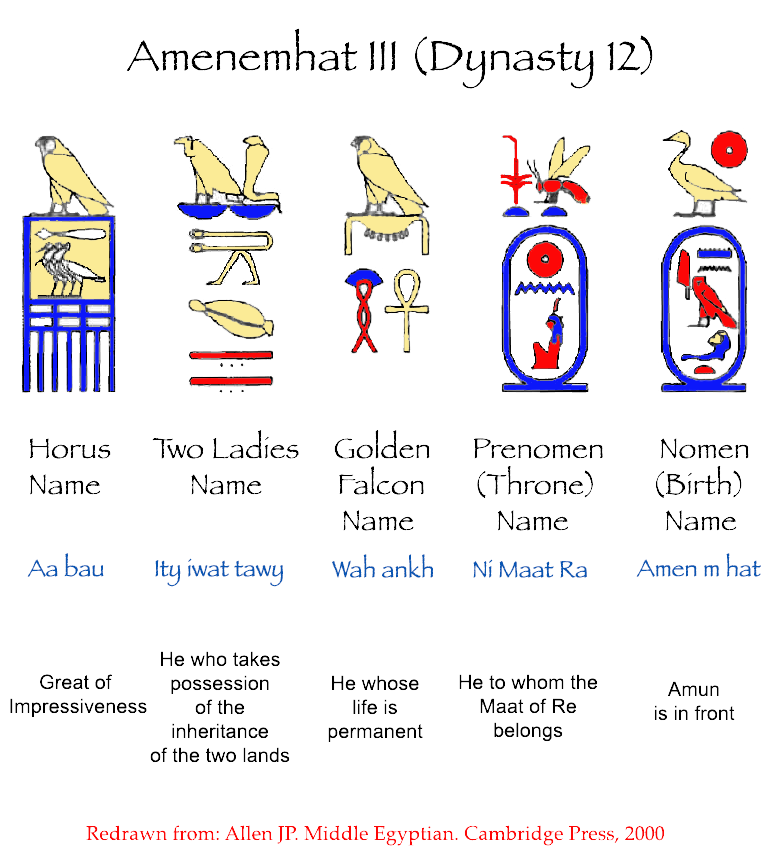
The first name, and perhaps the most renowned, was the Horus name. This name linked the pharaoh to the falcon god Horus, symbolizing kingship, protection, and divine authority. It represented the pharaoh’s role as the earthly manifestation of Horus, the god of the sky and kingship.
The Horus name typically appeared within a serekh, a rectangular enclosure resembling a palace façade, emphasizing the pharaoh’s dominion over Egypt. For example, Pharaoh Khufu, builder of the Great Pyramid of Giza, bore the Horus name Medjedu.

Serekh containing the name of Djet and an association with Wadjet, on display at the Louvre. (Guillaume Blanchard, CC BY-SA 1.0)
Nebty Name
Following the Horus name was the Nebty name, which highlighted the pharaoh’s association with the goddesses of Upper and Lower Egypt, represented by the vulture (Nekhbet) and the cobra (Wadjet) respectively. This name reinforced the pharaoh’s sovereignty over the unified kingdom of Egypt and emphasized their role as a unifier of the land.
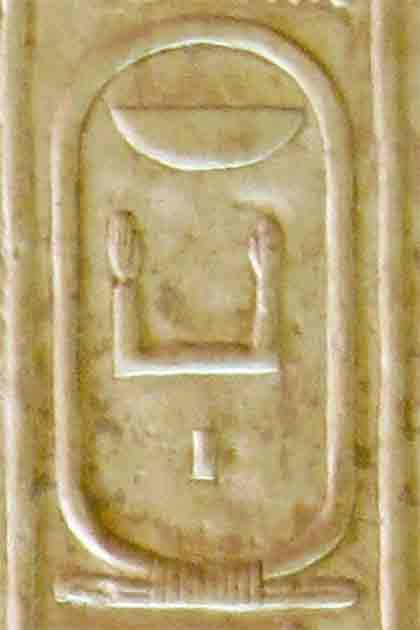
Cartouche of an Egyptian pharaoh name of Nebka on the Abydos King List (JMCC1/CC BY 3.0)
The Nebty name signified the pharaoh’s divine mandate to maintain harmony and balance within the kingdom. An example of a Nebty name is Nebkha, used by Pharaoh Djoser of the Third Dynasty.
Horus of Gold – Divine Beings Ruling on Earth
The Golden Horus name, also known as the “Horus of Gold”, emphasized the pharaoh’s royal lineage and heritage. It typically incorporated the name of the pharaoh’s dynasty or family and was accompanied by epithets denoting power, greatness, or divine favor. However, this is not entirely certain, as scholars still debate the exact meaning of this title.
Nevertheless, the Golden Horus name underscored the pharaoh’s legitimacy and right to rule, linking them to their predecessors and ancestral lineage and emphasizing their immense power. For instance, Ramses II, one of ancient Egypt’s most renowned pharaohs, bore the Golden Horus name Usermaatre Setepenre.
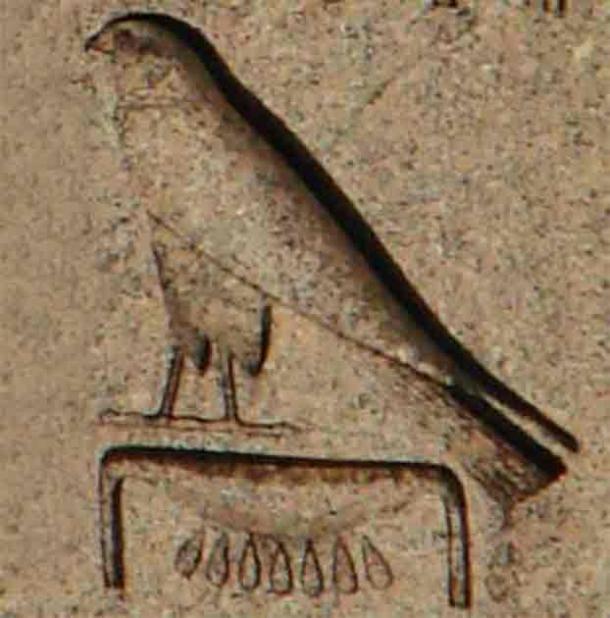
Golden Horus hieroglyph sculpted on the obelisk of Ramses II. Place la Concorde, Paris, France. (Public Domain)
Prenomen
Next was the Prenomen, or “throne name,” which was adopted by the pharaoh upon ascension to the throne. This name was used in official inscriptions, royal decrees, and diplomatic correspondence.
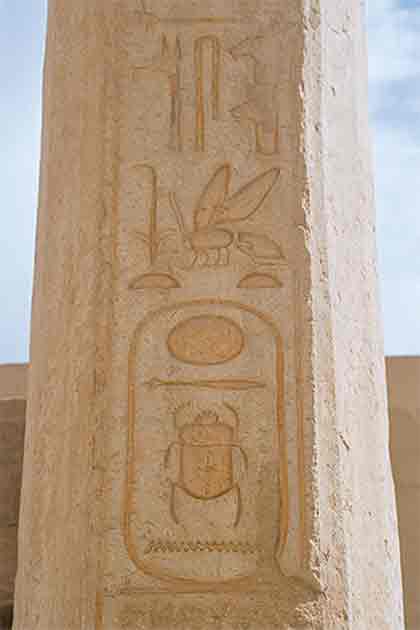
Praenomen of the Cartouche of Thutmose II preceded by Sedge and Bee symbols, Temple of Hatshepsut, Luxor (Przemyslaw “Blueshade” Idzkiewicz/CC BY-SA 2.5)
The Prenomen often encapsulated the pharaoh’s aspirations, achievements, or religious devotion, serving as a proclamation of their reign’s defining characteristics. It was written within a cartouche, an oval-shaped enclosure symbolizing eternity and protection. For example, Tutankhamun’s Prenomen was Nebkheperure, meaning “The possessor of the manifestation of Re”.
Nomen
Finally, the most intimate and secretive of the pharaoh’s names was the Nomen, or “birth name.” This was the name given to the pharaoh at birth, reflecting their individuality and personal identity.
The Nomen was rarely divulged to the public and was kept hidden from all but the closest confidants and family members. It was believed that knowing a person’s true name granted power over them, so the Nomen was safeguarded as a closely guarded secret. An example of a Nomen is Tutankhaten, the birth name of Pharaoh Tutankhamun.
A Complex Set of Royal Titles and Praises
There is no doubt that the complex set of titles a pharaoh had were devised in order to enhance their power, and to ensure that the populace recognized their rule. So, an example of a pharaoh’s full name – in this case of Pharaoh Tutankhamun – would be as follows:
- Horus name: Ka nakht tut mesut (Victorious bull, the (very) image of (re)birth)
- Nebty name: Nefer hepu, segereh tawy (Perfect of laws, who has quieted down the Two Lands)
- Golden Horus name: Wetjes khau, sehetep netjeru (Elevated of appearances, who has satisfied the gods)
- Throne name: Neb-kheperu-re (The possessor of the manifestation of Re)
- Nomen: Tut-ankh-imen, heqa iunu shemau (The living image of Amun, Ruler of Southern Heliopolis)
Another good example is the full royal titulary of Pharaoh Thutmose III, that would look like this:
Kanakht Khaemwaset, Wahnesytmireempet, Sekhempahtydjeserkhaw, Menkheperre, Thutmose Neferkheperu
(Horus Mighty Bull, arising in Thebes; He of the Two Ladies, enduring in kingship like Re in heaven; Horus of Gold Powerful of strength, Sacred of appearance; He of the Sedge and the Bee, enduring of form is Re; Son of Ra, Thutmose, beautiful of forms.)
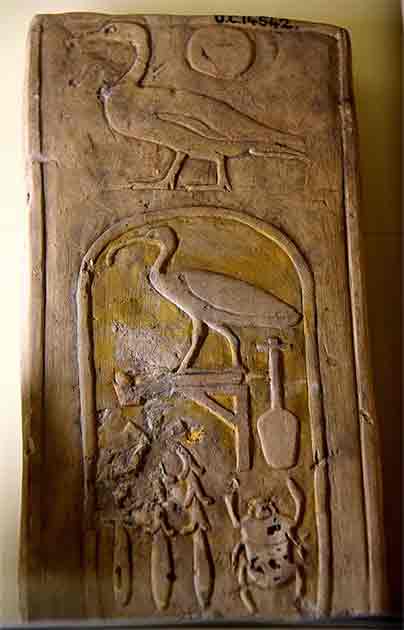
A fragment of a wall block inscribed with the birth-name of Thutmose III. Now in the Petrie Museum of Egyptian Archaeology, London (Osama Shukir Muhammed Amin FRCP(Glasg)/CC BY-SA 4.0)
Without a doubt, the five names of an ancient Egyptian pharaoh constituted a complex system of titles and epithets that conveyed the ruler’s divine status, royal lineage, and earthly authority. Each name served a distinct purpose, whether it was invoking the pharaoh’s connection to the gods, affirming their sovereignty over Egypt, or proclaiming their royal lineage and achievements. Together, these names reflected identity and power, reinforcing the pharaoh’s position as the divine intermediary between gods and mortals.





